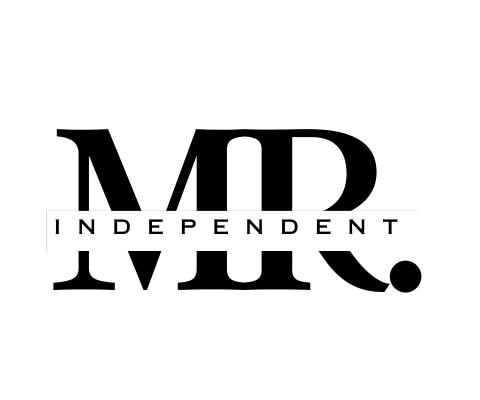You’re dodging the exact habits that could transform your life. Yeah, those terrifying-looking routines.
Waking up at 5 AM? Messaging complete strangers? Getting brutally honest feedback? They all feel like walking off a cliff in the dark. (Spooked yet?)
But guess what – these nerve-wracking habits are exactly what separate the evolvers from the stuck-in-their-ways crowd. That pit in your stomach? The sweaty palms? That’s just growth banging on your door.
Time won’t wait around while you play it safe.
So which uncomfortable habit are you avoiding that could flip your whole game upside down?
Here are 17 scary-at-first habits that lead to huge growth, but only if you are consistent with them.
Key Takeaways
- Embracing discomfort through early rising and cold messaging builds productivity and opens professional doors.
- Actively seeking feedback and speaking up in meetings enhances communication skills and career opportunities.
- Creating distraction-free environments and tracking your time usage cultivates deep focus and clarity.
- Taking complete responsibility for outcomes—both successes and failures—accelerates personal growth.
- Public admission of mistakes and regular digital detoxes build emotional intelligence and cognitive health.
Waking up at 5 AM and working for one focused hour.
That 5 AM alarm feels like absolute torture at first—I know because I’ve hit snooze approximately 387 times.
But dedicating one focused hour before the world wakes up creates this magical growth space nothing else can match. When your phone isn’t buzzing with notifications and your mind isn’t cluttered with the day’s demands, you can tackle your most important work with laser-like concentration.
Whether you’re writing, planning your business, or learning something new, that golden hour becomes your personal accelerator for massive progress while everyone else is still dreaming.
The true power doesn’t come from the specific time but from conquering that initial discomfort and claiming space for deliberate growth before life’s chaos begins.
Those quiet morning moments allow your brain to operate at peak capacity when willpower reserves are fullest, giving you momentum that carries throughout your day.
Many successful people swear by this habit not because they enjoy the pain of early rising, but because they’ve discovered an uncomfortable truth: sometimes the most life-altering habits feel borderline miserable at first.
Your body eventually adapts to the schedule change, but your goals adapt to a whole new trajectory of achievement.
Embracing these daily challenges consistently transforms temporary discomfort into lasting personal resilience.
Asking for feedback after every major task.
While most people run and hide from critique like it’s a contagious disease, you’ll need to develop the terrifying habit of actively seeking feedback after completing important work.
This isn’t merely about occasional performance reviews—it’s about consistently expanding your vulnerability threshold by requesting specific input that might sting but ultimately strengthens your skills and professional growth.
The key to making this process effective lies in establishing a systematic approach to gathering diverse perspectives on your work. Creating a regular cadence of feedback loops helps normalize the experience and reduces the natural anxiety that comes with exposing your work to scrutiny. When you intentionally step outside comfort zones, you create opportunities for transformative personal development.
| Feedback Type | Growth Opportunity |
|---|---|
| Direct criticism | Builds emotional resilience and develops thick skin; helps identify core weaknesses quickly |
| Process evaluation | Improves workflow efficiency and time management; highlights redundant steps and bottlenecks |
| Peer review | Reveals blind spots and unconscious habits; provides industry-standard benchmarking |
| Client reaction | Aligns with market needs and customer expectations; validates real-world application |
| Self-assessment | Develops honest accountability and metacognition; strengthens internal quality standards |
The long-term benefits of embracing regular feedback extend far beyond immediate skill improvement. Consistently seeking input creates a growth mindset that positions you as a perpetual learner in your field, making you more adaptable to industry changes and emerging trends.
The compound effect of implementing feedback over time leads to accelerated professional development and enhanced career opportunities, while simultaneously building a reputation as someone who values excellence and continuous improvement.
Look, turning down social invites revolves around being a hermit—it’s about recognizing which interactions actually fill your battery and which ones leave you feeling drained, resentful, and wondering why you bothered.
We’ve all dragged ourselves to events where we checked our watches every fifteen minutes, forcing fake smiles while internally screaming. Those energy-draining gatherings create a double tax: you waste precious hours AND start the next day feeling exhausted rather than recharged.
This habit requires getting brutally honest with yourself about which people and activities genuinely energize you versus those that deplete you. That awkward dinner with your partner’s complaining coworkers? That friend who turns every conversation into a competition? The networking event where you’ll make small talk until your face hurts?
The hidden costs of comfort often manifest in repeatedly saying yes to draining social obligations that stifle personal growth.
Saying “no” to these creates space for massive growth—whether it’s pursuing creative projects, building meaningful relationships, or simply giving your brain the downtime it desperately needs. The temporary discomfort of declining invitations becomes laughably small compared to the compounding benefits of protecting your energy.
Speaking up in meetings even when nervous.
Protecting your social energy sits on one side of the growth coin—putting yourself out there occupies the other. In meetings, your heart pounds, palms sweat, and suddenly your brilliant ideas feel stupid, a phenomenon known as social performance anxiety.
Welcome to overcoming anxiety 101, where the path to professional growth requires strategic discomfort and calculated risk-taking.
Your voice matters, even when it shakes, because every contribution builds your professional presence and strengthens team dynamics. Comfort zone myths often prevent us from taking the first step toward meaningful personal development.
| Stage | What Happens | Growth Benefit |
|---|---|---|
| Silent | Ideas stay trapped, self-doubt dominates | Zero impact, missed opportunities |
| Terrified | Voice cracks, face flushes, rapid heartbeat | Survival threshold broken, fear conditioning weakens |
| Awkward | Articulating thoughts poorly, losing train of thought | Communication muscles flexing, resilience building |
| Coherent | Points made clearly, maintains eye contact | Respect from colleagues, increased credibility |
| Confident | Leading discussions, inspiring others | Career advancement, leadership development |
Start small—one comment per meeting. Then build, gradually increasing your participation threshold as comfort grows. Remember that time you accidentally called your teacher “Mom”? This won’t be nearly as bad, and unlike that memory, speaking up actually leads somewhere good.
The journey from silence to confidence follows a predictable psychological adaptation curve. Each time you contribute meaningfully in a meeting, neural pathways strengthen and anxiety responses diminish.
Professional growth requires embracing these moments of discomfort, understanding that temporary awkwardness paves the way for lasting competence. Your colleagues likely share similar anxieties, making the meeting room a shared space for collective growth and mutual support.
Cold-messaging five new people weekly.
Cold-messaging five new people weekly sounds absolutely terrifying to most of us. Sending unsolicited messages to strangers? Talk about stepping straight into the discomfort zone!
But that’s precisely why it belongs in scary habits for huge growth—because the activities that make our palms sweat often deliver the most significant returns. When you deliberately reach out to five new connections each week, you’re fundamentally forcing open doors that would otherwise remain closed, creating pathways to unexpected opportunities, collaborations, and relationships.
The beauty of this habit lies in its compound effect. Those five messages weekly add up to 260 potential new connections yearly—that’s an entire network built from scratch!
Some folks will ignore you, others might respond briefly, but a handful will become meaningful connections that alter your career or personal life. The key isn’t perfecting your message but simply hitting “send” despite the awkwardness.
And remember, successful people do this regularly not because they enjoy the initial discomfort, but because they’ve witnessed how small, consistent actions create massive momentum over time. Your growth is waiting on the other side of those scary messages.
Breaking free from self-imposed limits requires challenging our comfortable routines and pushing beyond what feels safe.
Blocking all distractions during deep work.
Although many of us claim to value productivity, most aren’t willing to face the terrifying reality of truly disconnecting from our digital tethers and constant streams of interruption.
Creating a distraction-free environment isn’t just helpful—it’s absolutely necessary for meaningful progress, as research shows that each interruption can cost up to 23 minutes of focused work time.
When you block every notification, silence your phone, and shut down email, you’ll feel a strange panic at first, similar to withdrawal symptoms from any addictive behavior. That’s normal, and this discomfort is actually a sign that you’re breaking free from dependency on constant stimulation.
| Deep Work Techniques | What You’ll Feel | Expected Duration |
|---|---|---|
| Website blockers | Initial anxiety, urge to override | First 3-4 sessions |
| Phone in another room | FOMO, phantom vibrations | Subsides after 1 week |
| 90-minute focus blocks | Mental resistance, restlessness | Improves after 2 weeks |
| Noise-canceling headphones | Liberation, increased focus | Immediate benefit |
| Email auto-responders | Professional guilt, fear of missing urgent matters | Resolves in 2-3 days |
Trust me, what feels like an impossible sacrifice becomes your hidden advantage in a world of perpetual distraction. Your brain desperately wants to check social media, but the quality of work you’ll produce in true deep work sessions will shock you.
It’s uncomfortable, but life-changing, as you’ll discover a level of clarity and output you didn’t know you were capable of achieving. Breaking comfort zones consistently leads to unprecedented personal and professional growth.
The transformation to becoming a deep work practitioner requires both patience and systematic implementation of these techniques. The initial discomfort of disconnecting will give way to a profound sense of accomplishment and mastery over your attention span.
Your ability to engage in sustained periods of focused work will become a superpower in an age where most people can barely concentrate for ten minutes without checking their phones. This investment in attention management pays dividends in both professional output and personal satisfaction.
Sharing your ideas publicly online weekly.
Putting your thoughts, insights, and half-baked concepts out into the digital universe every single week is absolutely terrifying—and that’s precisely why it works for massive growth. When you commit to posting your ideas regularly, you’re basically signing up for consistent vulnerability, which forces your brain to constantly generate content and refine your thinking.
The internet doesn’t care if you feel ready; it just creates space for your evolution in plain sight where feedback (both helpful and harsh) becomes inevitable.
This weekly practice alters abstract thoughts into concrete assets while building your reputation as someone who consistently delivers value. The most powerful aspect? The compounding effect.
Those weekly posts gradually form a body of work that attracts like-minded people, creates unexpected opportunities, and distinguishes you from the countless others who keep their ideas safely tucked away in private notes apps. Your concepts sharpen through exposure, your communication skills tighten with practice, and the trajectory of your personal or professional development accelerates in ways that staying comfortable never could. Learning to embrace uncertainty becomes easier with each public sharing, transforming fear into fuel for growth.
Confronting someone when boundaries are crossed.
The moment someone tramples across your personal boundaries is exactly when your growth potential skyrockets—if you’re brave enough to address it. Most people swallow their discomfort and silently seethe, but that’s a missed opportunity for developing assertiveness training and emotional intelligence practices.
These challenging moments serve as critical checkpoints in your personal development journey, offering chances to strengthen your interpersonal skills and self-advocacy. The way you handle boundary violations can transform surface-level conflicts into profound learning experiences, especially when approached with mindfulness and strategic communication.
Facing your fears directly unlocks valuable life lessons that cannot be learned any other way.
| Boundary Violation | Conflict Resolution Technique | Growth Outcome |
|---|---|---|
| Interrupting you repeatedly | Active listening exercises, pause-and-reflect method, strategic timing of responses | Earned respect, improved conversation flow, enhanced professional presence |
| Taking credit for your work | Direct, factual confrontation, documented evidence presentation, collaborative solution proposal | Professional confidence, workplace recognition, stronger career advocacy |
| Making decisions without you | Role playing scenarios first, establishing clear decision protocols, setting involvement expectations | Stronger partnerships, improved team dynamics, clearer communication channels |
| Disrespecting your time | Non-verbal cues + clear words, calendar boundaries, time-blocking strategies | Better time management, increased productivity, respected scheduling practices |
| Criticizing you publicly | Trust building methods, private feedback requests, professional development planning | Authentic relationships, constructive feedback culture, enhanced team trust |
You’ll fumble through these conversations at first—everyone does. The key isn’t perfect execution but simply showing up with effective communication skills.
The journey toward mastering boundary enforcement requires consistent practice and refined approaches tailored to each situation. Each confrontation becomes a building block in developing stronger interpersonal dynamics and more authentic professional relationships, while the skills learned transfer seamlessly across both personal and professional spheres.
The most successful boundary-setters understand that discomfort is temporary, but the benefits of standing firm in your values create lasting positive change.
This transformation occurs gradually through repeated exposure and practiced responses to boundary violations, ultimately leading to more fulfilling and respectful relationships in all areas of life.
Doing one thing that scares you every day.
Your comfort zone feels safe, sure, but it’s actually a growth prison disguised as a cozy blanket. When you deliberately seek out one small fear to conquer each day, you’re fundamentally rewiring your brain to handle bigger challenges. This isn’t concerning skydiving tomorrow (unless that’s your thing); it revolves around that phone call you’ve been avoiding, speaking up in a meeting, or finally learning how to poach an egg without creating a watery disaster.
These tiny courage muscles build up over time, making formerly terrifying situations merely uncomfortable, and uncomfortable situations downright boring.
The beauty of this habit lies in its compounding effect. After 30 days of small scary things, you’ll look back and barely recognize the person who thought asking for a raise was impossible. Your nervous system gradually recalibrates, teaching you that discomfort doesn’t equal danger—it equals expansion.
The process evolves from “Oh god, I can’t” to “Well, that wasn’t so bad” to eventually “What else can I tackle?” Before long, you’re operating in an entirely different league of possibilities, while everyone else remains stuck in their comfortable, predictable, growth-free bubbles.
When you recognize signs of stagnation, it’s crucial to push yourself toward these daily challenges that spark personal development.
Investing money in learning, not just saving.
While financial experts drone on about maximizing your 401k contributions and traditional investment vehicles, truly wealthy people understand that investing in personal development yields returns that no stock market can match.
That $1,000 course that terrifies your wallet might be exactly what propels your career forward by $10,000 next year, especially in high-growth fields like technology and business analytics.
Strategic learning investments represent one of the most overlooked wealth-building tools in today’s knowledge economy. Developing an investment mindset means seeing learning as your primary asset, rather than another expense, which requires a fundamental shift in how we view education and skill acquisition.
| Learning Investment | Traditional Saving | Winner |
|---|---|---|
| Online course ($997) – Advanced Digital Marketing | $997 in high-yield savings (2% APY) | Course (potential 10x return + immediate career applications) |
| Industry conference ($2,500) – Including networking events | Beach vacation ($2,500) | Conference (networking = opportunities + industry insights) |
| New skills certification ($1,500) – Project Management | 65″ Smart TV ($1,500) | Certification (future-proofing + 20% average salary increase) |
| Professional coaching ($3,000) | Emergency fund deposit | Coaching (career acceleration + leadership development) |
Look, continuous learning isn’t optional anymore—it’s survival in an increasingly automated world. Your brain is either growing or dying, and the gap between skilled and unskilled workers continues to widen dramatically.
The compound effect of consistent learning investments often manifests in unexpected ways throughout your career trajectory. Each new skill you acquire becomes a building block for future opportunities, creating a powerful network effect that can exponentially increase your earning potential over time.
Moreover, the psychological return on investment from continuous learning extends beyond monetary benefits, enhancing your professional confidence and adaptability in an ever-evolving job market. Embracing a 30-day growth challenge can jumpstart your commitment to personal development and create lasting habits for success.
Tracking every hour of your day for clarity.
Most of us float through our days with only a vague sense of where our time actually goes. You might swear you only spent 30 minutes scrolling through social media when it was actually two hours! Tracking every single hour forces you to confront the uncomfortable truth about your habits. With a simple notebook or app, you record what you’re doing each hour for a week or two, and suddenly—wow—the patterns become painfully obvious.
Those “quick breaks” that stretch into hour-long distractions? They’re all there in black and white, impossible to ignore.
This practice isn’t focused on becoming some obsessive time-management robot; it’s centered on gaining honest awareness. When you see that you’re spending eight hours weekly watching shows but “don’t have time” to work on your business idea, it creates this perfect clarity moment.
Your use of time directly reflects your priorities, whether you’ve chosen them consciously or not. The discomfort of seeing your habits mapped out becomes the exact catalyst needed for meaningful change. And that’s the whole point—you can’t improve what you don’t measure, and you can’t change what you refuse to see. Learning to embrace discomfort consistently is essential for achieving personal growth and transformation.
Admitting when you’re wrong—out loud.
Once you’ve gained clarity about your time management habits, the next uncomfortable growth habit hits even closer to home: admitting when you’re wrong—out loud.
This practice demands embracing vulnerability in ways that make most people squirm, requiring you to set aside ego and face your mistakes head-on. Acknowledging mistakes publicly accelerates your personal growth exponentially, as it creates an environment of trust and authenticity.
The willingness to openly admit errors demonstrates both emotional intelligence and leadership maturity, setting an example for others to follow. Using empowering daily affirmations can help overcome the natural fear of admitting mistakes publicly.
| When You’re Wrong | What Happens When You Admit It |
|---|---|
| In meetings | Colleagues trust you more and feel safer sharing their own mistakes; team problem-solving improves |
| With partners | Relationship deepens through increased emotional intimacy; communication barriers dissolve |
| About assumptions | You learn faster and adapt more effectively; cognitive biases decrease |
| With clients | They become loyal advocates and forgive future mistakes more readily; long-term relationships strengthen |
| In public forums | Your credibility actually increases as authenticity shines through; others see you as more relatable |
The initial sting of saying “I was wrong about that” feels like swallowing a cactus. But watch what happens after—people don’t think less of you; they respect you more for your honesty and self-awareness. Your imperfections become your superpower when you own them before anyone else can point them out, transforming potential criticism into opportunities for connection.
The practice of admitting mistakes creates a powerful ripple effect throughout professional and personal relationships. This vulnerability-first approach builds psychological safety in teams and strengthens interpersonal bonds, while simultaneously accelerating your own learning and development.
The most successful leaders understand that acknowledging errors isn’t a sign of weakness but rather a demonstration of authentic strength that inspires trust and loyalty in others.
Taking complete responsibility for all outcomes.
Look, when things go wrong, it’s incredibly tempting to point fingers at your boss, your annoying coworker, or even that traffic jam that made you late.
But owning every single outcome in your life—good, bad, and downright ugly—is where actual growth happens. This means accepting that while you can’t control everything that happens, you absolutely control how you respond.
When you stop blaming external circumstances and start asking, “What could I’ve done differently?” you change from a passive participant into the author of your own story.
The truth? This habit feels terrible at first. Nobody enjoys admitting they contributed to their own disappointments or failures.
However, claiming responsibility isn’t about beating yourself up—it’s about claiming your power. When you acknowledge your role in creating outcomes, you simultaneously discover your capacity to create different ones.
The person who says “My presentation bombed because I didn’t prepare adequately” rather than “My presentation bombed because the projector malfunctioned” is the person who’ll absolutely crush it next time.
Total responsibility equals total control over your growth trajectory.
Spending one full day offline each week.
While our phones and laptops have become digital extensions of our daily existence, creating an almost symbiotic relationship with technology that feels impossible to break, disconnecting completely for 24 hours each week might be the scariest—yet most life-changing—habit you’ll ever adopt.
Your brain desperately needs this digital detox to reset neural pathways and restore natural attention spans, even when you think you’re managing screen time effectively, as constant connectivity subtly erodes our ability to focus and process information deeply.
| Day Without Technology | Digital Detox Benefits | What You’ll Notice |
|---|---|---|
| Morning | Clearer thinking, reduced anxiety | You’ll actually taste breakfast, notice morning birdsong |
| Afternoon | Deeper conversations, enhanced focus | Time slows down, genuine human connections emerge |
| Evening | Enhanced creativity, improved mindfulness | Books become fascinating, hobbies feel rewarding |
| Night | Better sleep quality, reduced blue light exposure | Dreams become more vivid and memorable |
| Next Day | Productivity boost, improved mood | Monday feels manageable, increased motivation |
Look, I know the FOMO feels real—what if someone posts something important? They won’t. The world spins without your likes, and your social media presence can wait 24 hours without consequence.
The benefits of a weekly tech sabbatical extend far beyond immediate mental clarity and into long-term cognitive health. Regular digital breaks have been shown to lower cortisol levels, improve memory retention, and strengthen real-world social bonds that often suffer from our screen-centered lifestyles.
The practice of intentional disconnection creates space for personal growth and self-reflection, while simultaneously reducing the chronic stress associated with constant digital accessibility.
Decluttering your space ruthlessly every month.
Clinging to stuff you don’t need is like walking around with weights strapped to your ankles—it drags down your energy and clouds your thinking. When you commit to ruthlessly decluttering your space every month, you’re creating a physical environment that allows your mind to breathe and focus on what truly matters.
This isn’t merely about tossing old magazines or donating clothes that no longer fit; it concerns critically examining everything you own and asking, “Does this serve my growth or hinder it?” The discomfort you feel while deciding what stays and what goes is precisely the muscle you need to strengthen for massive personal development.
This monthly habit forces you to confront your attachments, your “just in case” mentality, and your tendency to define yourself through possessions. Each time you clear out another drawer, closet, or digital folder, you’re practicing decision-making and prioritization—skills that translate directly to other areas of your life.
Your physical space reflects your mental space, and when you consistently choose to keep only what serves your highest goals, you’re training yourself to be equally ruthless with how you spend your time, energy, and attention. The person who can confidently fill a donation box every month is developing the exact mindset needed for exponential growth.
Reading one challenging book cover-to-cover monthly.
Most people read to escape reality, but tackling a difficult book every month forces you to confront it instead and develop critical thinking skills.
You’ll stretch your mental capacity in ways passive entertainment never could, even when it feels like mental gymnastics, since challenging reads require active engagement and sustained focus.
The key is maintaining intrinsic motivation when the going gets tough, which means finding personal meaning in the material rather than reading solely out of obligation. Developing strong reading habits takes dedication and consistency, but the cognitive rewards are worth the effort.
| Challenging Genres | Benefits | Difficulty | Getting Started |
|---|---|---|---|
| Philosophy | Enhanced reasoning, ethical framework development, questioning assumptions | Hard | Begin with contemporary philosophers, then progress to classics |
| Classic Literature | Cultural literacy, improved vocabulary, historical context | Medium-Hard | Start with novellas under 200 pages, focus on one time period |
| Science/Math | Analytical thinking, problem-solving skills, logical reasoning | Very Hard | Choose illustrated guides, work through basic concepts first |
| Foreign Perspectives | Cross-cultural understanding, broadened worldview, language appreciation | Medium | Select award-winning translations, research cultural context |
Don’t worry if you need to re-read paragraphs—that’s normal with complex material! The growth happens in the struggle, not the speed, as your brain forms new neural connections.
The practice of sustained reading builds cognitive resilience and improves overall mental performance across various aspects of life. Regular engagement with challenging texts enhances memory retention, verbal reasoning, and critical analysis skills that transfer to professional and academic pursuits.
Your future self will appreciate the investment in intellectual development when others have surrendered to passive consumption, as these reading habits create lasting cognitive benefits that compound over time.
Asking mentors direct questions without hesitation.
Most of us freeze up when we need to ask our mentors the tough questions. We dance around topics, waste valuable time with small talk, and leave conversations without the insights we actually needed. This fear of looking stupid keeps us trapped in mediocrity.
The scary truth? Growth happens when you drop the ego and ask precisely what you need to know—even if your voice shakes, even if you think the question might sound basic. Those moments of discomfort are where the real learning begins.
The mentors worth having actually respect direct questions. They appreciate when you value their time enough to be specific, and they recognize genuine curiosity when they see it. Your willingness to say, “I don’t understand how you negotiated that deal,” or “What exactly did you do after your biggest failure?” creates space for authentic wisdom to flow.
While everyone else is nodding along pretending to understand, you’ll be collecting actionable insights that alter your trajectory. The temporary awkwardness of direct questioning pays permanent dividends in your growth.
Conclusion
These habits will suck at first. That’s good. Discomfort means you’re doing something right.
Pick one scary thing tomorrow. Maybe drag yourself up at 5 AM. Or send that nerve-wracking message you’ve been avoiding.
Growth happens through small, uncomfortable actions. The people you admire? They pushed through fear daily. Nothing fancy – just consistent, scary choices.
So yeah, your stomach might churn. Your palms might sweat. Do it anyway. The only path to massive change is through the stuff that scares you.
Your move.
FAQs
How Do You Maintain These Habits During Major Life Transitions?
To maintain habits during major life transitions, focus on adapting gradually rather than making drastic changes. Keep your core routines as simple as possible, adjust your schedule in small increments, and reach out to friends or family who can help you stay accountable. When life gets chaotic, prioritize just 1-2 key habits that matter most, be patient with yourself as you adjust, and look for creative ways to incorporate your habits into your new circumstances. Having an accountability partner check in regularly can provide both support and motivation while you establish new patterns.
What Happens When These Habits Cause Relationship Strain?
Relationship strain from personal growth habits typically leads to tension, misunderstandings, and emotional distance between partners. To address this, set clear boundaries about your growth needs while staying open to compromise. Have honest conversations about how your changes affect both of you, listen actively to your partner’s perspective, and work together to find solutions that support both individual growth and relationship health. Schedule regular check-ins to discuss concerns before they escalate, and consider couples counseling if communication becomes consistently difficult.
How Long Before These Uncomfortable Habits Start Feeling Natural?
Most uncomfortable habits take 2-4 weeks to start feeling natural, with some becoming easier within days while others might need up to 2 months. During this initial period, stick to small, manageable changes and focus on consistency rather than perfection. As you push through the discomfort, your brain gradually rewires itself, making the new habits feel more automatic and less daunting. Track your progress daily to stay motivated and celebrate small wins along the way. Remember that temporary discomfort is a sign of growth and positive change taking root.
Can These Habits Work for Neurodivergent Individuals?
Absolutely yes – neurodivergent individuals can successfully use these habits with the right adaptations. The key is customizing strategies to match your specific brain wiring and needs. Try breaking habits into smaller, manageable steps, using visual aids or reminders that work for you, and adjusting timeframes to match your natural rhythms. If a particular method doesn’t click, experiment with alternatives until you find what sticks. Many neurodivergent people actually discover more effective ways to grow by adapting traditional approaches to their unique strengths.
Which Habit Typically Produces the Fastest Noticeable Results?
Daily meditation produces the fastest noticeable results of any habit change, with reduced stress responses visible within days and sharper focus emerging after just one week of practice. Even 5-10 minutes each morning can create immediate improvements in your mental clarity and emotional balance.
How can good habits contribute to overall personal development?
By anchoring your day in solid routines like daily habits and tiny actions, you build momentum. These compound over time, shaping your mindset, confidence, and results—just like investing, but for your brain.
How do I start my personal growth?
Start by getting honest with yourself. Pick one uncomfortable but powerful habit—like journaling or morning walks—and repeat it. Growth isn’t fireworks; it’s consistency. Small habits lead to big changes in your life.
How can one identify which habits, values, mindset shifts or goals contribute most towards their own individual growth & development process?
Audit your discomfort. If a habit makes you cringe but deep down you know it’ll help (like public speaking or waking up earlier), that’s your north star. Your values and mindset evolve around what you repeatedly do.
What’s a scary habit I can start today that builds self-confidence?
Do one thing that makes you uncomfortable every day. Cold showers, initiating tough convos, or speaking up at meetings. Confidence is earned, not gifted. Action cures fear.
Why do scary habits feel impossible to stick to?
Because your brain is lazy and loves comfort. It’ll throw tantrums when change shows up. But use the power of small habits—tiny commitments that slowly rewire your mindset without burning you out.
How do small actions really lead to major growth?
You build trust with yourself every time you show up. Those small actions, when done daily, create identity shifts. Suddenly, you’re no longer “trying”—you just are. That’s the atomic habits magic at work.
I’m stuck in procrastination. How do I break out?
Start so small it’s laughable. 1-minute tasks. Just open the document. Put on the workout clothes. Procrastination hates clarity. Beat it by tricking your brain with small wins.
What role does a workout routine play in scary growth habits?
Huge. A consistent workout is physical discomfort turned ritual. It boosts discipline, energy, and even mental resilience. It’s a training ground for other scary habits too.
Is it normal to want to quit scary growth habits?
Yes, welcome to being human. Most people quit because they expect fast rewards. Real growth is silent for weeks before it screams success. Stay uncomfortable. That’s where the change brews.
Why do we resist tiny habits that seem so easy?
Because we underestimate the power of small habits. If it feels “too easy,” we assume it won’t work. Truth bomb: simplicity is sustainable. Keep it boring. That’s the secret sauce.









